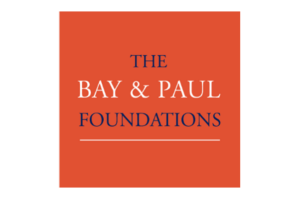The impact of board diversity on firms and the experience of Indigenous board members
In a first of its kind report, authors Gauri Subramani and Kalie Wertz set out to examine how boards with Indigenous representation differed in process, perspective and performance from their counterparts lacking such representation, but with so few Indigenous directors serving or having served globally, the scarcity in data forced them to change their approach.
They proceeded with a two-part approach and published their findings in a report titled Board Diversity: Literature Review and the Indigenous Experience.
The first part of the report summarizes the robust literature studying the drivers and implications of board diversity on firms. They found compelling data for how the demographics and diversity of board members has a significant effect on firm outcomes and social externalities. Due to the small sample size of Indigenous board members and their scarcely researched nature, conclusions specific to the link between Indigenous board members and firm outcomes could rarely be made.
The second part of the report is a case study that features interviews with 11 Indigenous-identifying individuals with board experience. The final interview sample included seven women and four men, three in Canada, one in Australia, and seven in the US. Members of this group identify as Native American, Aboriginal Australian, Indigenous Hispanic, and First Nation people.
Read on to learn about the novel perspectives that Indigenous board members bring to their organizations and their motivations and challenges to board service.
Insights from Indigenous Board Members
The Principle of Seven Generations
“Among the Haudenosaunee people, we have what’s called the principle of seven generations. It’s very simple but it’s a great leadership principle that I introduced to the full board. It goes like this: if you are in a position of leadership, you have a sacred responsibility to think about seven generations. You think about the seven generations before you make a decision; you have to think about the wisdom of those who came seven generations before you. And you think about how your decision or organization is going to impact those to be born seven generations after.”
– Andrew Lee, a Seneca man with roots in the Allegheny Indian Reservation in New York state with private and nonprofit board experience
The value of diversity on boards
“A lot of organizations think about diversity as a cost. No, it’s not a cost – it’s actually an enhancement. Because if you just think of having lawyers and accountants and finance people and whatever else, yes, that’s all very good and you do need those, but how many people are really long-term strategic thinkers, and how many people understand obligations to the society in which you live? How many people know what’s going on with the ordinary people? Then that’s the bit which boards lack, and that’s what you get from diversity. So it’s not dumbing down; it’s actually scaling up and if you don’t have it, your board gets left behind and therefore your organization gets left behind.”
– Ian Hamm, a Yorta Yorta man in Australia with private and nonprofit board experience
Board service as a pathway to provide a voice to Indigenous communities
“I go to work to make a difference in people’s lives, and to hopefully effect changes in these Indigenous communities whose lives have been impacted so negatively over the generations, since the residential schools. I’m going to continue to do this work, because I’m making changes that will support the work of these communities in becoming self-sufficient, and hope that a lot of these communities will become self-governing as well, [instead of] relying on existing government systems that seem to be pushing down our people and our communities rather than lifting them.”
– Participant 2, a woman who is a member of the Neskonlith Band in Canada with public and nonprofit board experience who chose to remain anonymous
Challenges to Indigenous board representation
“[Organizations are] looking for people that are capable, qualified, and interact well. That’s where sometimes there’s discomfort because the cultures and the behaviors can be a little different, but by and large those boards do what’s the easiest. They have a list of measurable qualifications and they go to someone and say, ‘Apply that against the easiest population,’ which is their current database of mostly people who look like them. So it becomes convenient.”
– Roger Carlile, a Cherokee man in the US with private and nonprofit board experience
This research was made possible with the support of:



